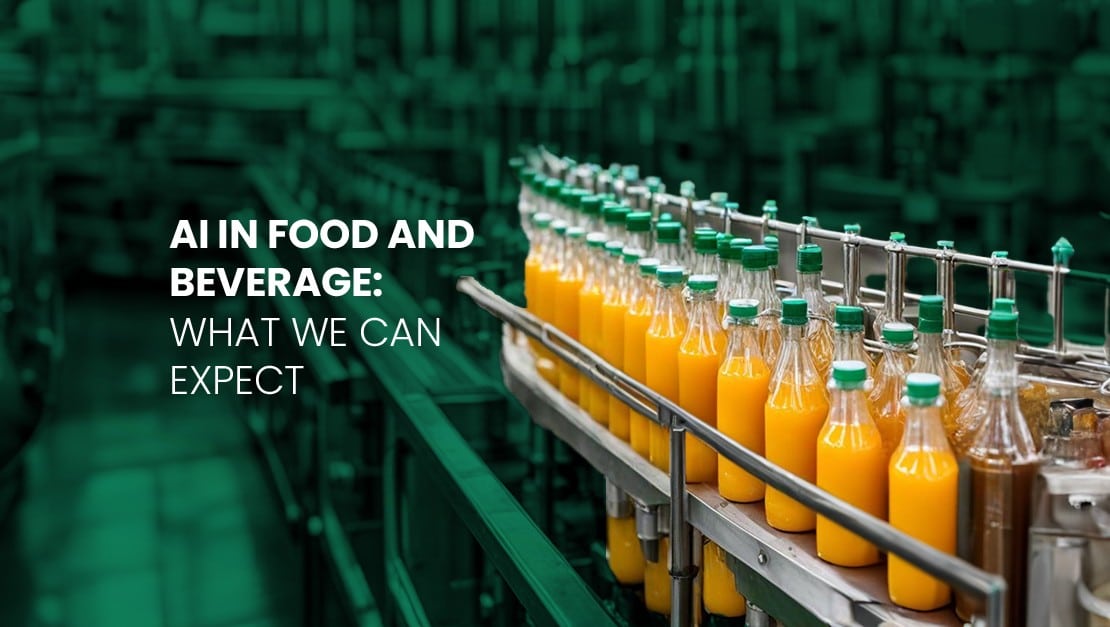Digital transformation has affected all aspects of business and commerce in many industries. The exacerbation of global supply chain reliability in the face of the COVID-19 pandemic made supply chain management a hot topic of conversation, even among those who weren’t familiar with it previously.
The digitization of supply chains is leading to processes that are more transparent, reliable, and visible, helping companies prevent mass shortages in inventory and enabling them to ensure deliveries are more streamlined. By integrating new and emerging technologies in supply chain management, organizations can ensure that they’re better prepared when the market, trends, or demand change.
In this blog post, we’ll look more closely at what defines a digital supply chain, the key technologies it relies on, its benefits, and how speech-powered platforms like aiOla make it easier for companies to integrate new technologies without significant disruption.
What Is a Digital Supply Chain?
A digital supply chain refers to the digital technologies that help companies streamline processes related to the production, distribution, and management of supplies and products. Digital technologies like artificial intelligence (AI), the Internet of Things (IoT), sensors, and data analytics help businesses gauge demand for their goods while providing real-time visibility into various stages of supply chain management.
While traditional supply chains relied heavily on manual processes, this led to a system that was prone to human error, inefficient, and that followed a linear pattern where one event follows another. However, digital supply chains function more like a vast ecosystem where multiple processes are occurring simultaneously. Businesses can track supplier deliveries and performance, look at customer needs and forecast demand, automate workflows, and analyze ongoing supply chain events data to improve decision-making.
The need for digital transformation in supply chains was born out of increased market demand for quicker deliveries as well as more cost-effective solutions for managing the movement and distribution of goods. More recently, the COVID-19 pandemic played a role in highlighting the importance of digital resilience in supply chain operations where weaknesses were exposed and 57% of businesses experienced serious disruptions.
Key Components of a Digital Supply Chain
Many different technologies go into digitizing a supply chain. The systems and tech solutions your company will use depend on your unique needs and business goals. Below, we’ll go over some of the more common technological components that make up modern supply chains.
Data Analytics and Business Intelligence
Data analytics plays an important role in supply chains by offering companies a way to forecast and plan demand, helping them get ahead of potential risks. Business intelligence tools like Salesforce’s Tableau, Microsoft’s Power BI, and SAP Analytics Cloud all offer visibility into critical metrics and performance indicators. Companies can use tools like these to look at historical data, identify patterns, and use those insights to improve inventory management strategies.
Internet of Things (IoT)
IoT devices allow organizations to track and monitor goods in real time as they move through the supply chain. These devices help teams improve inventory management and operational efficiency by offering more accurate updates and data. Major companies like Walmart use IoT devices like RFID tags and sensors to track inventory levels and locations and optimize both store and warehouse operations.
Artificial Intelligence (AI) and Machine Learning (ML)
AI and ML can help in the distribution logistics area of supply chain management. From automating route generations and decision-making related to delivery, companies can optimize delivery times and improve customer satisfaction. For example, UPS uses Orion, a system that uses AI and ML to constantly improve routes throughout the day. The technology has not only saved UPS 100 million miles but also reduced its fuel consumption by 10 million gallons per year.
Blockchain Technology
Blockchain gives companies greater transparency, security, and trust in supply chain systems. IBM Food Trust helps companies and manufacturers in the food industry improve supply chain transparency and traceability by connecting a network of participants for greater food safety monitoring. This technology enables food companies to ensure their supply chain is more sustainable and efficient while producing less waste and improving safety monitoring.
The Benefits of Supply Chain Digitization
There’s a reason why 85% of CFOs agree that digital transformation in supply chain management will result in improved cash flow. While supply chain digitization can boost a business’s bottom line, it’s not the only benefit that comes with introducing new technologies to a traditional supply chain model. Here’s a look at some of the advantages of digitizing your supply chain.
Increased Speed and Efficiency
Digitizing your supply chain creates opportunities for automation, which helps speed up supply chain processes. By reducing dependencies on manual tasks, you can expect fewer delays between processes, real-time data to improve operations, and better connection of different systems, resulting in stronger overall efficiency.
Improved Accuracy and Visibility
With new technologies, you can gain clearer visibility on inventory levels, forecast demand, and see the status of deliveries. Digital platforms allow you to make more informed decisions while also reducing errors in various supply chain stages, leading to an overall improvement in performance.
Enhanced Flexibility and Scalability
The digitization of an organization’s supply chain allows it to remain flexible to shifting market demands. As markets and trends evolve, they allow your company to change to accommodate market conditions and growing business needs. Digital solutions are more easily scalable, allowing companies to adjust operations as needed and meet new requirements quickly.
Cost reduction and Improved Client Satisfaction
Since the digitization of a supply chain leads to higher efficiency and fewer errors, the end result is a more satisfied customer as deliveries are quicker, more accurate, and on time. The result is customers who are happier with your service, resulting in fewer cancellations and returned orders.
Digitizing Your Supply Chain With aiOla
Leveraging advanced speech AI technology, aiOla has the power to digitize multiple aspects of a supply chain. aiOla captures speech and turns it into actions, automations, and critical data that can impact essential work decisions. By picking up on keywords with astonishingly high accuracy, aiOla ensures employees’ focus is on the task at hand so that workflows remain uninterrupted.
With aiOla, supply chains can be improved in several ways, such as:
- Hands-free inspections for preventative maintenance to reduce downtime
- Minimizing paperwork and human errors with speech-activated operations
- Capturing otherwise lost supply chain data through speech
- Improves safety by enabling employees to keep their hands and eyes free and focused
- Clear overview of pallets and orders processed with real-time insights
aiOla can understand over 100 languages, including different accents, dialects, and industry jargon, making it an essential tool for global teams. Not only that, but aiOla can operate in any acoustic environment with no impact on accuracy. Just by speaking, aiOla’s platform can facilitate automations that make warehouse and logistics teams work more safely, quickly, and productively.
Start Digitizing Your Supply Chain Today
While many companies have already made the choice to digitize their supply chains, it’s never too late to start. Adopting a platform like aiOla that has little to no onboarding time or learning curve is a great place to start since it won’t disrupt any existing workflows, just enhance them. Whichever digitization platform you choose, upgrading your supply chain strategies with new technologies is one of the most reliable ways to safeguard your business against a constantly evolving market while helping your company remain both relevant and competitive.
Book a demo with one of our aiOla experts to see how we can help you digitize your supply chain.








